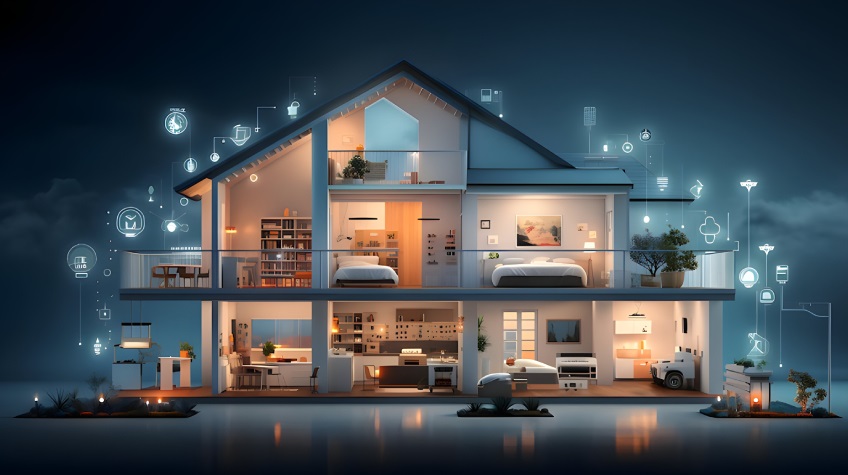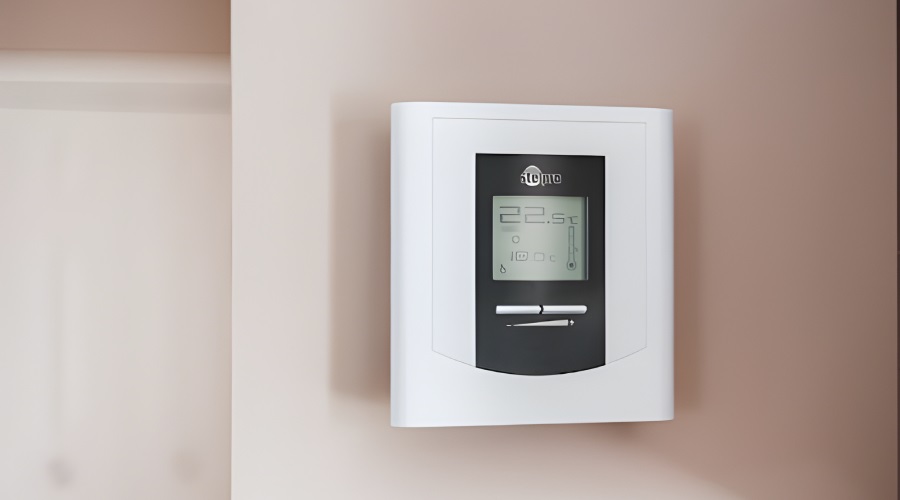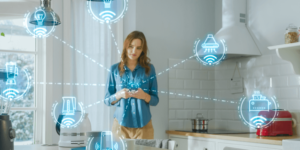
Energy reports show that the main source of a property’s energy consumption is its heating and cooling system. As a result, it can contribute to high utility bills and wasted energy, especially if it is left running all day on one temperature setting, even when no one is present.
However, IoT in home climate control makes heating and cooling your indoors more savvy using smart features that work with you to use energy only when you need it for lower energy consumption and utility costs.
IoT in Home Climate Control
IoT in home climate control means connecting your HVAC system to an internet-connected thermostat, also called a smart thermostat, which helps make it easier to monitor and manage your heating and cooling system whether you are at your property or away.
At home, the IoT smart home automation devices enables you to program it to personalized temperature settings according to your daily routines. This way, you only use energy when you need it. It also includes a touchscreen display, which makes it easy to adjust and select the exact temperature setting manually.
Or, while you are away, you can lower the temperature throughout the day and then increase it just before you arrive at the property via the W-Fi app on your mobile device.
No matter how you use your IoT-connected smart thermostat, it will help ensure more efficient energy use of your heating and cooling system. As a result, it also helps reduce carbon emissions for less environmental damage caused by excessive energy use, which helps fight climate change.
You may also qualify for an annual clean energy tax credit of thirty percent for incorporating smart home devices into your property and making it greener.
Key Features of IoT-enabled Smart Thermostats
The key features of an IoT-enabled smart thermostat will depend on your device’s brand. However, almost all internet-connected thermostats are equipped with sensors that use algorithms to learn your patterns and temperature preferences. So, one of their main features is they can be programmed to adapt to your behavior and then adjust the temperature accordingly to decrease energy use.
Some are also equipped with geofencing or a motion detector that detects motion and then adjusts temperatures when it senses someone is present.
Many devices also have a climate zoning feature that allows you to control the temperatures in different rooms so that only the occupied spaces are cooled or heated, which also helps save energy.
Smart thermostats also feature communication protocols that enable users to connect to them via a smartphone app so they can be controlled remotely. You may also be able to connect it to a digital assistant so it will respond to voice control.
Benefits of IoT-Enabled Smart Thermostats

An IoT-enabled home temperature control system with smart thermostat provides many benefits for achieving a comfortable indoor climate and at a lower cost. However, the main benefit is it provides access to real-time data, which can be used to improve your property’s energy use at any time of the day.
Some IoT thermostats also provide tips and offer suggestions on how to save energy by lowering the temperature to help meet your goals. You may even be able to set limits on how high and how low your thermostat setting will go for even more control and energy savings.
Smart thermostats also work with most HVAC systems, so just about anyone can benefit from their features.
They also offer a low-cost solution to installing a newer, more efficient HVAC system because they require little renovation to install. However, newer heating and cooling systems can also benefit from an IoT technology and smart home system for better energy management.
The IoT sensors in a smart thermostat can also help with preventative maintenance for your HVAC systems by gathering information on it, such as when it has become less efficient, it is using too much power, and more. It will then alert the property owner so they can have the system serviced to prevent a breakdown.
An HVAC technician can also use the information in the app to help diagnose the issue and repair it.
You will also have peace of mind knowing your property is working for you to save on energy bills without sacrificing heat and air conditioning when you need it.
Smart thermostats future trends
The market for smart thermostats is anticipated to increase at a steady rate over the next five years among both residential and commercial customers in Northern America and beyond, with Wi-Fi smart thermostats being the most in demand.
Meanwhile, the market itself has an estimated worth of just over $1 billion and is expected to top out to close to $4 billion by 2030.
More than ten brands are major players in the smart thermostats market, which makes it easier than ever for customers across the globe to choose a product that suits their needs and incorporate this technology into their property.
And when you work with an IoT software development company for your smart home automation solutions, they can help ensure seamless connectivity of your chosen device and enrich its features through IoT development for a product that is truly yours.
Conclusion
Finding the right formula to lower your property’s heating and cooling bills and controlling your HVAC system so it is more efficient can be a hassle. However, an IoT thermostat helps make it easier to do all from your fingertips with its internet-connected accessibility and control, which makes it worth looking into.
You also don’t have to know how to choose the features for your home temperature control system on your own because an IoT software development company can help you understand, set up, and operate your device for its smooth integration into your property.




![Top 15 Internet Of Things [IoT] Examples in Progressive Era Top 15 Internet Of Things [IoT] Examples in Progressive Era](https://www.weetechsolution.com/wp-content/uploads/2023/10/Internet-Of-Things-Technology-Examples-300x150.jpg)

